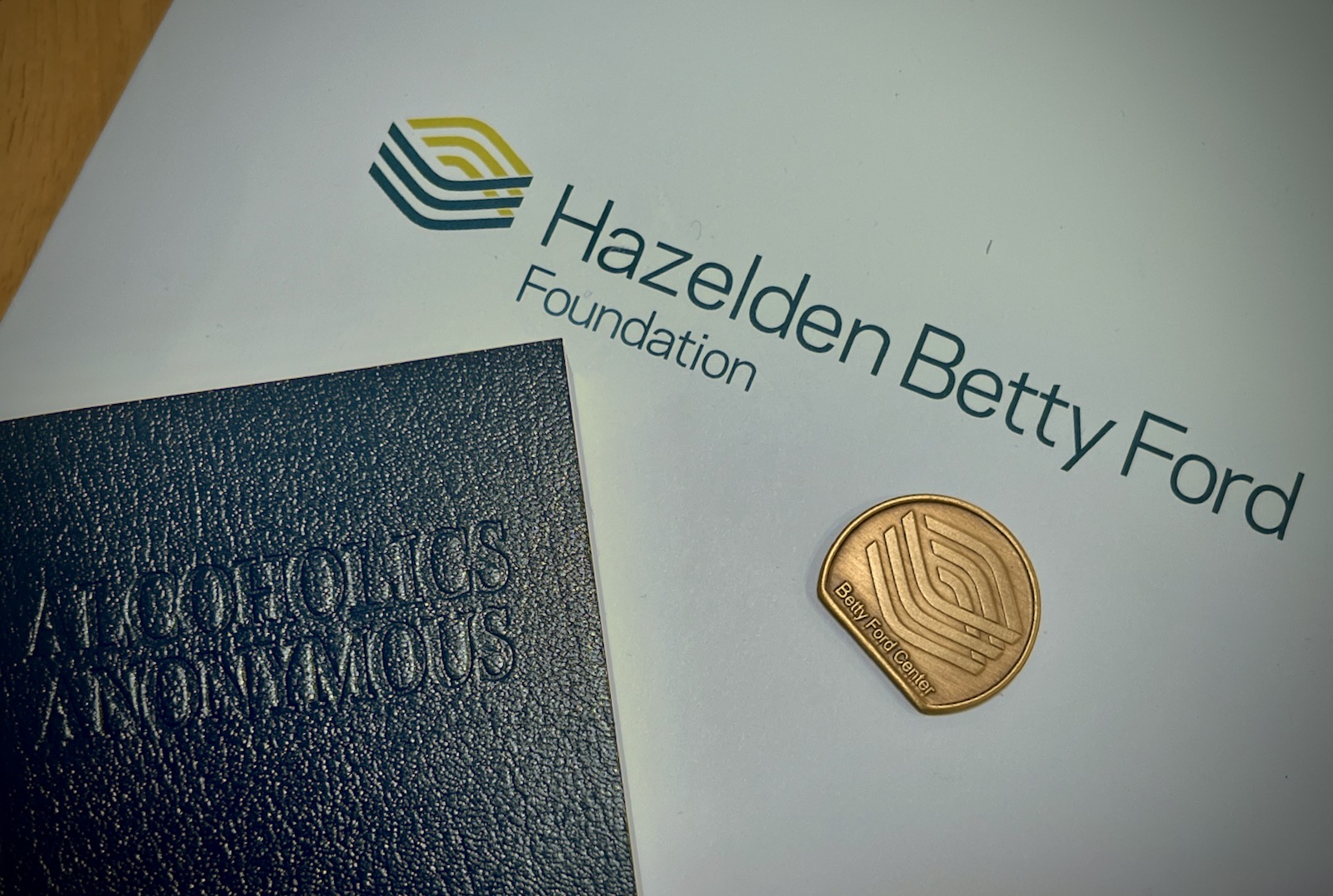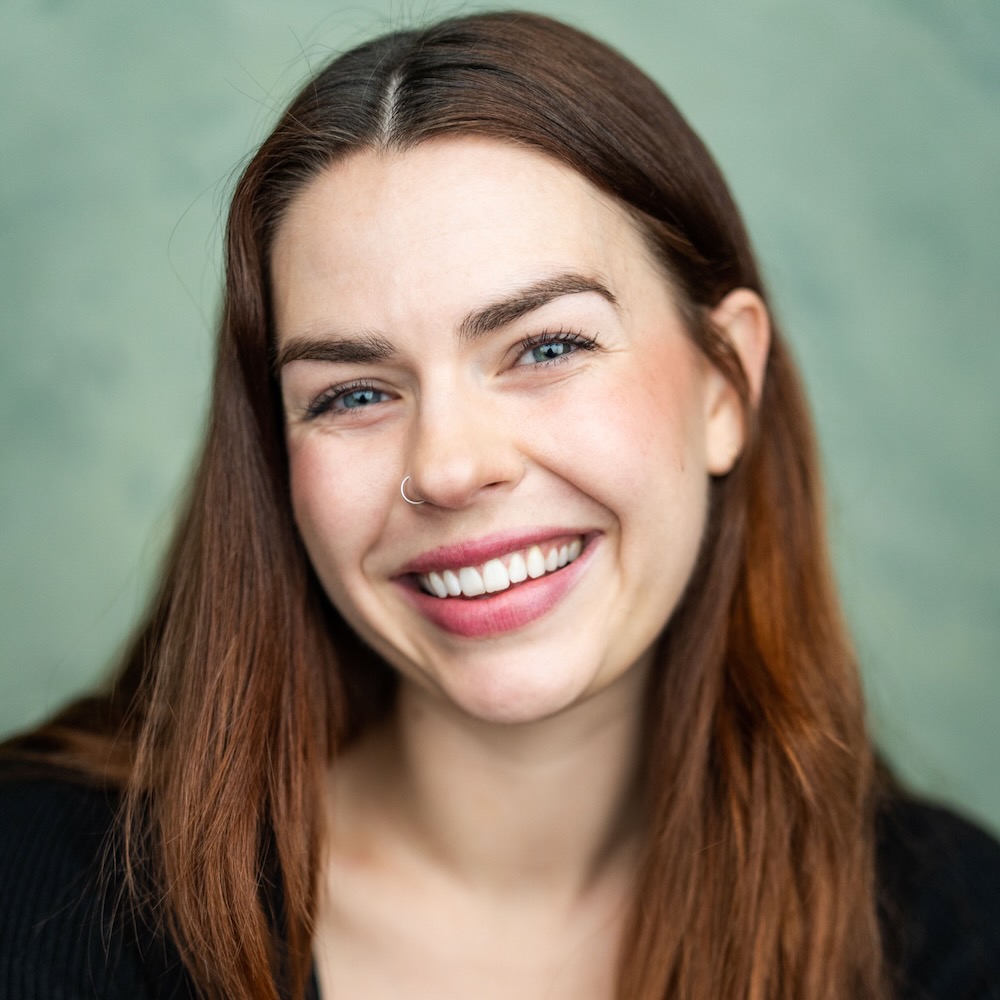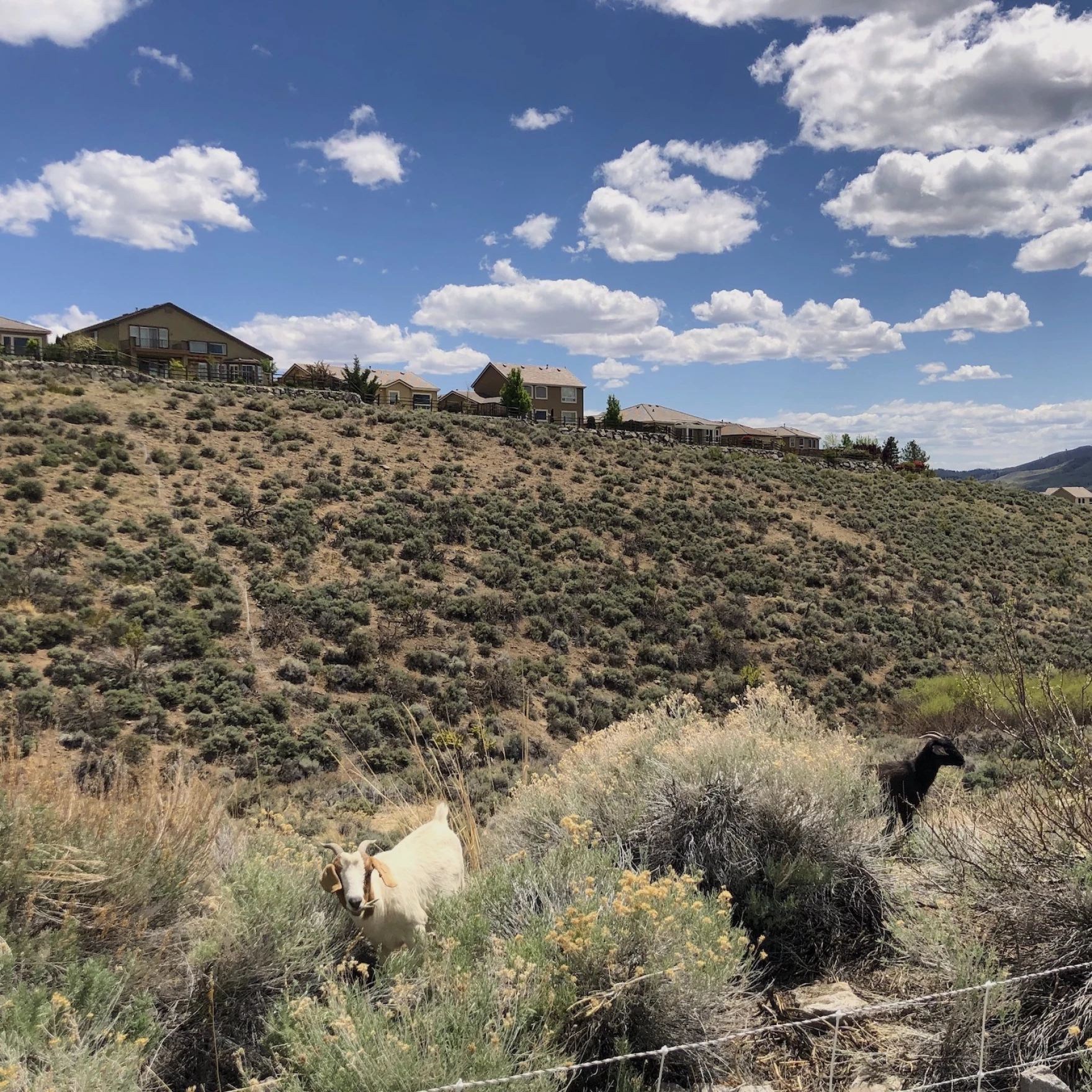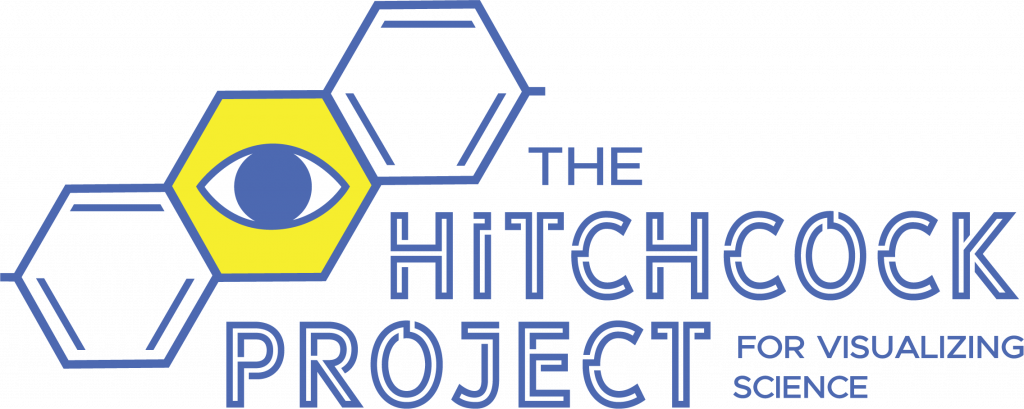A Q&A with Joseph Skrajewski
Joseph Skrajewski is the National Director of Business Development and Healthcare Solutions for the Hazelden Betty Ford Foundation, and former Executive Director of Medical and Professional Education. The Hazelden Betty Ford Foundation is an addiction treatment and advocacy organization. It includes an addiction and recovery publishing house, a graduate school for addiction studies, and 14 recovery locations alongside virtual and outpatient substance use services with programs for those recovering from addiction and their families. Skrajewski is not only an influential presenter and speaker, but he is also a national thought leader on addiction education for professionals.
Skrajewski previously worked for the White House Office of National Drug Control Policy and is an expert in addiction education, propelling the substance use field forward through his important work and advocacy. Hitchcock Project science reporter Douglas Collins, a second-year medical student at UNR Med, interviewed Skrajewski to talk about the importance of addiction medicine education and recovery. Collins spent a week alongside fellow medical students at the Hazelden Betty Ford Center earlier this year in Palm Springs, to learn alongside those in recovery in their medical education partnership program.
This interview has been edited for length and clarity.
Collins: Can you introduce yourself, your title, and what you’ve done in the Hazelden Betty Ford Foundation?
Skrajewski: Absolutely. Thank you, Douglas, for the opportunity to be with you today. My titles are the National Director of Business Development Healthcare Solutions and Executive Director of Medical and Professional Education. For 15 or so years now, I’ve been at the Hazelden Betty Ford Foundation. I grew up in New Jersey, spent most of my life in New York City. Prior, my first career was working in Wall Street as a financial advisor for Morgan Stanley. I worked in the World Trade Center, went through 9-11 while there. Following that experience, I was drinking alcohol too much, using substances as well, and fortunately got into treatment at a relatively young age.
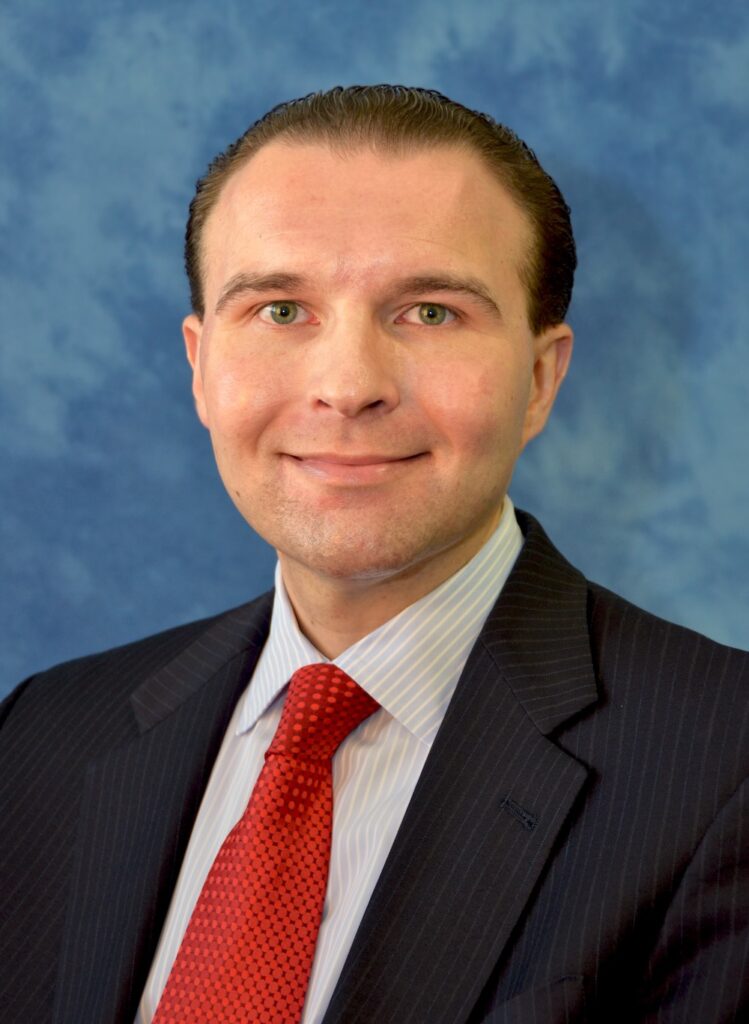
At that time, I couldn’t see myself doing finance or economics for the next 30 or 40 years. Somebody came to me and said (in a super insulting way), what are you even good at Joseph? And I blurted out and said, “I’m good at school” and they said why don’t you go back to school and get some extra letters after your name. I did my graduate work in psychology and came out here when Betty Ford [wife of President Gerald Ford] was actually alive. I lived about two miles from the Betty Ford campus here near Palm Springs and got to meet Betty Ford. Two organizations, Hazelden in Minnesota, and the Betty Ford Center in California merged together to create Hazelden Betty Ford a little bit over 10 years ago.
We are now that largest nonprofit substance use organization in the United States. We have sites in many different states as well. We’re going to provide care and services to tens of thousands of patients over the course of this year, and we do many publishing services, education services, and the family and children’s services.
My history is primarily focused around working with medical students, residents, fellows, and then other individuals in safety-sensitive positions, anyone that’s touched by addiction at any formal capacity. Much of my career has been dedicated to bringing in individuals like yourself, Douglas, and various universities that we’ve partnered with. We’ve worked with 180 different medical schools over the course of my career in bringing students here. Some have bigger relationships, but we primarily bring them to our residential facilities to learn about addiction through the eyes of the human beings living with it.
I’m trying to develop an experience for people to connect with our patients, to reduce stigma, and show them that our patient population looks very much like you and me. Most of our patients have jobs, have families, and have big lives. Yet sometimes they have this, different path that takes them to a place like Hazelden Betty Ford, or elsewhere, to receive services for substance use disorder whether: mild, moderate, or severe. It’s been a journey. It’s been an adventure, and it’s been exciting.
I think our patients are fascinating, and I think they’re the most resilient people you will ever meet. Many of them have had lots of traumas, challenging childhoods, difficult lives, yet they’ve bounced back time and time and time again, and here they are at our facilities looking for hope. Looking for a different way at life and looking to be better. Better children, better parents, better spouses, better partners, and just better people all the way around.
So that’s what I’ve dedicated much of my life to, treating addiction as a family disease, helping families, helping children, reducing stigma, opening access to care. I think that is a key part of this as well, trying to get insurance coverage for individuals to receive care for substance use disorder, trying to open up good treatment for all individuals regardless of socioeconomic status. I’m just trying to move the needle in the right direction with regards to serving people that need us.
Collins: For context to those who may not know, who was Betty Ford?
Skrajewski: Betty Ford was the wife of former president Gerald Ford, who became president after Nixon left the White House. Betty was by his side, and they had four children together. Their youngest child, Susan Ford Bales, is on our board of trustees, and I see her relatively regularly. They are fully committed to the cause as well. A number of years later, Betty Ford was having challenges with alcohol and prescription medication, so the family had an intervention for Betty to go into treatment herself, and she went to Long Beach Naval Hospital. Three and a half years later, she helped open the Betty Ford Center here in Rancho Mirage, California.
She was cautious at that time, and she went to her husband, now former President Gerald Ford, and said that she has been in recovery for three and a half years, and that she was going to put her name on buildings. He agreed, and her name became a shining beacon of hope for individuals to seek care, and it opened the door for women to seek treatment. She also opened the door for women that had breast cancer, talking openly and freely about breast cancer before anyone was talking about it. She spoke that to the masses, just as she did with addiction.
She went on Larry King and started talking about the challenges she had with alcohol and prescription medications. The next thing you know, more women were reaching out for help and entering into care. That’s one of the things we’re most proud of here at the Betty Ford Center, that this has been a safe place for all individuals to seek treatment. Most notably for women to seek care here as well.
Betty Ford is one of those first ladies that’s probably more well-known than her husband was in being the president. She was proud, and prominently visible before she passed away about a dozen years ago. Any time you needed her, she would walk across campus and go see patients and take them by the hand. She would lecture to the patients here in the West auditorium. Dr. West was my mentor, he helped come up with the idea of our Summer Institute for Medical Students and our professionals in residency and others. We took it for granted, to get up and go to work every day, going to the clinic or hospital, but here was Betty Ford, this extremely proud, prominent and visible woman opening up care for people that struggled with addiction.
She’s a hero too, I have pictures of Betty in my office from the dedication ceremony when we had her sculpture built. She’s done so much for so many individuals when it comes to breast cancer and addiction recovery.
Collins: You talked about substance use disorder as a family disease. Firstly, what is substance use disorder, and in terms of it as a family disease and as a deeply personal disease, how can it impact people and families?
Skrajewski: Substance use disorder, as you know, is a formal diagnosable disease. It is not curable, but it is treatable. More individuals than ever are seeking services nowadays, and there’s a spectrum, whether mild, moderate, or severe. People that are struggling with alcohol, with various addictive substances, whereby it is negatively impacting their social functioning, way of life, they can’t be the child to their parents, the partner to their loved one, the employee to their employer that they’d like to be.
There are typically consequences associated with one’s use, so I don’t typically run into patients who are on an upward trajectory who are entering into treatment. They are typically entering treatment because of pain, because of loss, because of suffering, and because of the consequences of their drinking and using.
That’s why people enter into treatment. They can enter through different modes, whether a family intervention whereby a family gets together and goes through what needs to change so that their lives can improve in the same way as the patients. They can also enter into treatment through the treatment as opposed to being sentenced to treatment or jail. We advocate for people being sentenced to treatment all the time with judges who learn from us through educational programs.
We provide them a kind, caring, open, and welcoming environment. We’re not here to judge other people. We’re not here to stigmatize them, they tend to beat themselves up far more than others. A lot of times it’s all about helping them love themselves until they’re ready to do so. That environment is super important, showing them we care too. A fair portion of our staff have a lived experience with addiction, whether themselves, a family member, friend, or loved ones.
When we talk about this family disease, many people who are brought up or grow up in families whereby addiction is present, it’s at the forefront. We actually have a children’s program here for 7-to-12 year olds that are affected by addiction. Not children affected or addicted by substances, children whose parents are struggling, and much of the time children come to our program their mother and father are still drinking and using, but they care deeply about their children. They want them to learn as much as possible and realize they’re not alone.
That’s key. Because what kids do when addiction is happening in the family, is that they make up stories and think it’s their fault. We help them learn more about feelings of fear and sadness and help them understand they’re not alone, that there are other kids like them that are going through challenging situations. We see little miracles all the time and we’ve been able to create Beamer the Lightbulb Boy, an animated character that speaks to kids in an age-appropriate way about their feelings. I have an eight-year-old son. When my son was you know at an appropriate age, he was seven years old, I helped him learn and understand a bit more about what I do for a living. And so, I introduced him to Beamer the Lightbulb Boy, and he loved the character. The light bulb changes based on his feelings.
A step further, we got a call from Sesame Street about five years ago, when they were working on things like foster care, the unhoused population and substance use disorder. Opiates in particular. We were able to create our own Muppet, named Karli, and I would strongly encourage all people to look it up to see what we did with that.
Addiction is shown on television and in the media as this dark, hopeless, helpless illness whereby people suffer, and they don’t recover. That is not what we see in treatment, and it is not what we see in the world that we live in. It is far more optimistic, far more beautiful when people you know respond and are resilient in their recoveries.
That’s why we do a lot of the programs we do with medical students, residents, fellows, and others, because a lot of the time they’re not getting educated on substance use disorder in curriculums, it’s not required learning which is unfortunate in 2024. So, we bring people here to meet patients, to hear their stories so that will help them throughout the next 20, 30, and 40 years. Our students and others practice so that they can help people just like our patients. It’s all about paying it forward, and opening people’s eyes to this highly pervasive disease that affects so many people.
Collins: Absolutely. What kind of treatment options are available for patients and people seeking treatment for substance use disorder?
Skrajewski: There are multiple levels of care, such as medically assisted detoxification from the substances they’re on. We have medical stabilization units where all people come and we stabilize them medically, so that they’re cared for, and we take them through the detoxification. That’s typically done through a taper and with different medications that can help them.
After that, many of them do residential care in our Betty bubble, which is 24-7 care in a residential treatment unit with other individuals going through a similar process, understanding they’re not alone, talking with a clinician, counselor, social worker, therapist, psychologist, mental health counselor, and spiritual care counselor. That way people can talk, as much of the time these individuals have been stuffing their feelings down, and may feel a lot of shame, or guilt surrounding their substance use. We surround them with other people that are fighting the same fight, and they become open, willing, honest, and they see a lot of compassion with their fellow peer group.
After they have stabilized even more, they’ll often go to a day treatment environment, often in a sober community, such as houses nearby where individuals are not drinking or using addictive substances, and it is a nice partial hospitalzation transition. They have more freedom, and can do whatever they choose to do, often with a curfew with a 10-step meeting at night.
After that level of care, most of the time they’ll go to an outpatient facility, and they do several hours a day, three to four days per week, for 6-8 weeks in our therapies, typically fully covered by their insurance. A lot of times they can do that back home where their families are, to the workplace where their jobs are waiting for them, but they can be connected to the recovery community.
After completing outpatient, many of them go to 12-step meetings, sometimes they’ll go to faith-based meetings, or monitoring where they call a number once a day and may need to give a urine sample. That’s just a level of accountability for people to work toward a resolution to the addiction that has encapsulated their life for quite some time. If they have the ability to take the amount of time and go through all those levels of care, that would be the ideal situation, but sometimes it’s a sort of hybrid, because people do need to get back to jobs, children, and partnerships.
Collins: What do you mean by completing steps, such as the 12 step meetings?
Skrajewski: A lot of research for getting people well and getting people into recovery that has been around for nearly 80 years, is the 12-step environment. Such as alcoholics anonymous for people with alcohol challenges, narcotics anonymous, gamblers anonymous. There’s a hundred different variations of 12-step or anonymous meetings. Sometimes there are communities, or hour long 12-step meetings, but sometimes they are shorter or longer. Those are free resources readily available in most communities so that people can see they’re not alone. They’re all fighting the same fight, talking about what’s going on in their lives, with their families, and jobs.
I think if people don’t realize that there are networks of individuals that are all trying to get well, that are all trying to recover from this insidious disease, if they don’t know what resources are out there, they may not look for them. We want to continue to be vigilant, share openly and honestly about this, and tell people they are not alone, and that there are resources available to you.
There are a lot of good people out there who have hearts of gold, that really want to share freely with you. There is the concept of sponsorship, and twelve-step environments have sponsors to guide individuals through the twelve steps in someone’s recovery. People do reflection, start looking at what’s been going on in their life so they can make amends. Some people believe in a higher power, admitting they are powerless over a substance. There’s a list of 12 steps meant to be done in order.
Collins: There’s a certain spirituality that you talked about, and I know that for some people that is a religious experience of believing in a higher power. For some people that is God, and others that’s something else. Is that right?
Skrajewski: It depends on each person, and it doesn’t have to be religious or secular in nature, and some people use various different acronyms for God, such as Good Orderly Direction. What we try to do is break down barriers, so if an individual struggles with a concept like religion, but they’re open to talking about concepts such as spirituality, we want to meet them where they’re at. A lot of patients come to treatment with loss and grief and may make statements like ‘where was God when I was losing custody of my child, or when I got into that car accident, or got that DUI’. I will go through those scenarios, and we’ll talk about how today is a new day, and let’s move forward in our lives, and that we don’t want to continue to beat ourselves up over and over again over all the things we’ve done.
They happened, and we’re not here to minimize that they happened. At the end of the day, you know you’re not drinking today. You’re not using today. You want a better future for yourself and your family. Let’s talk about the hope in something like that.
Sometimes they are open to spirit, and our spiritual care counselors such as Thomas Yu. It helps open people up to find aspects or attributes of themselves they haven’t tapped into in a very long time. We also help them find healthy things to do in place of drinking, such as physical fitness and wellness. Nutrition, mindfulness, mediation, Qigong, and we give them practical tools they can carry with them after treatment. They work on repairing the relationships that may have been fractured over the course of their drinking and use.
Collins: To talk more about the importance of substance use disorder and de-stigmatizing it, what’s the importance of studying substance use disorder? Hazelden Betty Ford is a big part of that, right?
Skrajewski: Yes, we have a fully endowed Butler Center for Research, headed by my colleague Dr. Quyen Ngo. We study patient outcomes and look at our patient’s post-treatment to see how they’re doing, maintaining abstinence, medications, involvement in 12-step communities, working with sponsors, getting jobs, things like that. Therefore, we can gauge and measure at different time frames how they’re doing post-treatment. We want to be seen on par with other medical specialties, as a true reputable house of medicine too.
We’ve come a long way over the last ten to fifteen years, fighting the good fight for decades now, and we have a fully accredited graduate medical education fellowship treating the patient population that needs them. One of the unfortunate things today is that 25 to 30 million people struggle with substance use disorder, and that number goes infinitely higher if you think about things like Nicotine. There’s two to three million people receiving substance use services right now, so I think we’re doing better, but we have a long way to go in leveling the playing field and getting people to not look down upon our disease and start associating it with providing care for our patient population in the same way they would provide care for diabetics or other illnesses and maladies.
Collins: You mentioned the stigma that the general public has. What things should the general public know that they may not already know about substance use disorder?
Skrajewski: That the face of substance use disorder is my face, your face, and every other face that we see on a daily basis. Much of the time, media portrays things in a very provocative, negative, dramatic way. You know, people lying in the gutter, unhoused populations with needles stuck in their arms and in extremely hard neighborhoods. Much of the time what they don’t show people going through a substance use experience, they’ve lost everything at by that point, they’re struggling mightily.
That is part of the equation, but a lot of people we see are people that have mild or moderate substance use disorder that still have their family, their jobs, but they just want a better way of life. They want to address this before it gets any worse, before they have any additional consequences, losses, or traumas. That’s why we do the immersive experiences for students and other individuals, because we want them to see this. We have been doing medical and professional education for 36 years here at Hazelden Betty Ford, and that’s a long time. I would say we’ve trained 10,000 students, residents, fellows, many of whom have gone on to public official positions, research positions, very visible advocacy positions and many others. They still arrive on Monday mornings to start our program, and they are surprised at what they see here at Hazelden Betty Ford.
I love seeing that change, and I’d love to get to a point where our student population shows up and they see the patients, and they say “oh, that’s what I thought they would look like.” I think we have ways to go with that, but I do think we’re getting better.
Collins: I will say, one thing that surprised me when going through the program, as I always imagined rehabilitation programs and inpatient programs as almost celebrity getaways. Often for people to relax and get away from the rest of the world. But in reality, what I found is that rehabilitation from substance use disorder is a LOT of work. Patients/residents do not have empty schedules, they have very, very full days.
That is on purpose, right? Could you speak to the amount of work that residents do in recovery?
Skrajewski: It is totally on purpose. Yes, if you were to look at a patient schedule for the patients or anywhere else, they get up early in the morning, go to get medications if they need them. Then they go to a mediation session with their peer group, go eat breakfast together to build fellowship and connect, then go to a lecture series to learn about many different topics. Not just about addiction, but family systems, hope for the future, and life skills. They go to one-on-one environments with clinicians, then to group-based environments with as little as 4 patients, to as many as 12 in their groups.
Then they go to lunch, another round of medical treatment, and another lecture series that are often more hospital and institution-based, where people share their stories from their recovery. They go to mental health meetings, do assessments, and then dinner together.
Basically, their schedules start at 6:30 a.m. and they are busy with recovery or exercise or connection-based activities until 9:30 or 10 o’clock at night. It’s definitely busy, and for a lot of them they may not like it at first because they may be re-regulating their bodies, but over the course of time they see the value in it. Because many of them have made ultimate sacrifices to come here for treatment.
I mean, half of our patients are from states we operate in, but we get patients from the other 40 states, many from Canada, Europe, and Asia. We have a good reputation, and have been around a long time, and have helped thousands and thousands of patients. So that helps with regards to people feeling comfortable with entering treatment here, and there’s also good treatment available to them elsewhere as well. We hope to normalize that.
We have partner facilities that we also work with because we always want to do what is best for the patient, and we don’t want patients to go through the treatment experience over and over again. There’s no reason why every single individual if they’ve demonstrated a willingness to be here, or a commitment to their recovery and wanting a better way of life for themselves can’t get the best future for themselves that they’ve never dreamed possible.
That’s what’s so exciting about this. I meet many different types of people, big personalities, small personalities, introverts, extroverts, and we smile and introduce ourselves, and connect with them, we show them they are loved and they don’t need to live the way they’ve been living prior to getting here.
Collins: It seems to have worked very well for the patients I’ve met through the program, and I’ve met some amazing people that are just like you and me.
Skrajewski: How cool is that, that you and 17 other students came here in April from the University of Nevada Reno, and our patients opened their arms widely and said “hey, we’re here to welcome you right now, we’re here to tell you about why we’re here. To tell you about our traumas and our families, to connect with you right now because we want you to pay it forward and help people like us throughout your careers.”
The culture here is so strong, and the familial type of atmosphere is so powerful that I think we’re doing right by our students and by our staff. I am surprised in the best of ways time and time again by how caring our patient population is. We also assign buddies, you get a patient buddy that has been in treatment for 2-4 weeks, and they take you their wing for 5 days, 50 hours.
I firmly believe that a huge difference can be made within a week, and you can leave here changed people. This life-changing experience, because regardless of people’s intentions as to why they wanted to come here or go to a treatment environment in the first place, and as a student you do make a sacrifice.
I know you could be doing something else on your spring break, and I know the students I have here this week [July] could be doing something else on their summer break, but their hearts are in the right place, and they want to help people like our patient population and others. They make that sacrifice, and that is important, valuable, and powerful, because it levels the playing field and humanizes the people that need us.
Collins: Absolutely, I felt totally accepted immediately. The first day we went into the counseling session a little scared. I went in, and the counselor immediately said “hey everyone, these are medical students, show them some love.” They immediately brought us in. We felt like we were a part of their family, and that meant a lot to us. It was a life-changing experience for me, and all of the other students. I am very grateful to have had that experience. It’s a very accepting environment when learning about substance use disorder.
Collins: Have there been any difficult things that have popped up recently or any new challenges in the field?
Skrajewski: Many new challenges. Some of the substances, such as fentanyl, carfentanil, and more people than ever are dying from these substances. We’ve known about people overdosing, we knew people were dying from this disease, but the numbers got so much larger, year after year, and many of these people were semi-innocently going to a party or trying substances for the first, second, or third time, and they died. That’s what we’ve seen more than ever, and why we’ve tried to be really proactive in working with universities and with the public health sector. Educating people about Narcan, or if they are overdosing removing punitive actions in corrections for individuals because there have been so many overdoses. How can we continue to educate other people so that they don’t look down on this disease, when more people than ever are challenged with accessing those services.
Especially since the pandemic, with huge increases in loneliness, depression, anxiety, suicide rates, and substance use disorder. With all these additional challenges associated with the pandemic, we’re taking a couple years to see the byproduct of those challenges. The value of a life, how precious one’s life is, and how quickly and easily their life can be taken from them, how that affects the person losing their life and all of those people around them that love them.
It reminds us how sensitive this issue is, and how we need to continue to work smarter, work harder, and help people access care. I think we’ve come a long way, and I think we still have a long way to go. I never want to sit here and act as if we haven’t gotten better, because we have. However, at the same time, as the numbers can get better, the drugs get stronger, and as we serve more people than ever, more people than ever are affected by substance use disorder.
The problem then gets larger, and the solution gets larger. We now can leverage virtual environments that are more readily available, especially for rural environments where they don’t have a primary care provider within 60-90 miles from them. We can try and leverage medication assisted treatment, that is useful and helpful to keep patients alive long enough to get the help and treatment they deserve and need.
Collins: Where can people, if they want to seek help for themselves or a family member go and find more information?
Skrajewski: Hazelden Betty Ford’s website (www.hazeldenbettyford.org), as well as SAMHSA, Substance Abuse and Mental Health Services Administration (www.SAMHSA.gov) They can go to the NIH, National Institutes of Health (www.nih.org). They have resources there. They could go to ACAM, American College of Addiction Medicine (https://www.acaam.org/), or 12-step communities as well, such as Alcoholics Anonymous, Narcotics Anonymous, or others. There are many resources now, and if they want to see some of the data we’ve put out, they can go to the Butler Center of Research (https://www.hazeldenbettyford.org/research-studies).
Collins: Anything else you would like to say?
Skrajewski: We care deeply about our patients and the individuals we serve; we’re always looking to open up access to care, reduce stigma, and increase and enhance advocacy efforts at private and public levels. We want people to understand addiction is in fact a family disease and it’s not just the person with substance use disorder that’s affected, but the parents, the siblings, the children and others.
We want them to understand that educating the future of healthcare about substance use disorders is important as well, because you’re going to be helping countless individuals during your lives, and that help is available. We don’t want people to hide from this, or feel guilty or shameful, and we want a better future for these individuals and their families and people as a whole.
I would like to thank Joseph Skrajewski for this interview, for sharing his story, background, and the broad array of knowledge he has. Thank you to the Hazelden Betty Ford Foundation for your amazing and worthwhile work. -DC
Douglas Collins is a second-year medical student with the UNR School of Medicine and holds bachelor’s degrees from UNR in Biology and Spanish. He completed this interview as part of a science communication internship with the Hitchcock Project during summer 2024.

